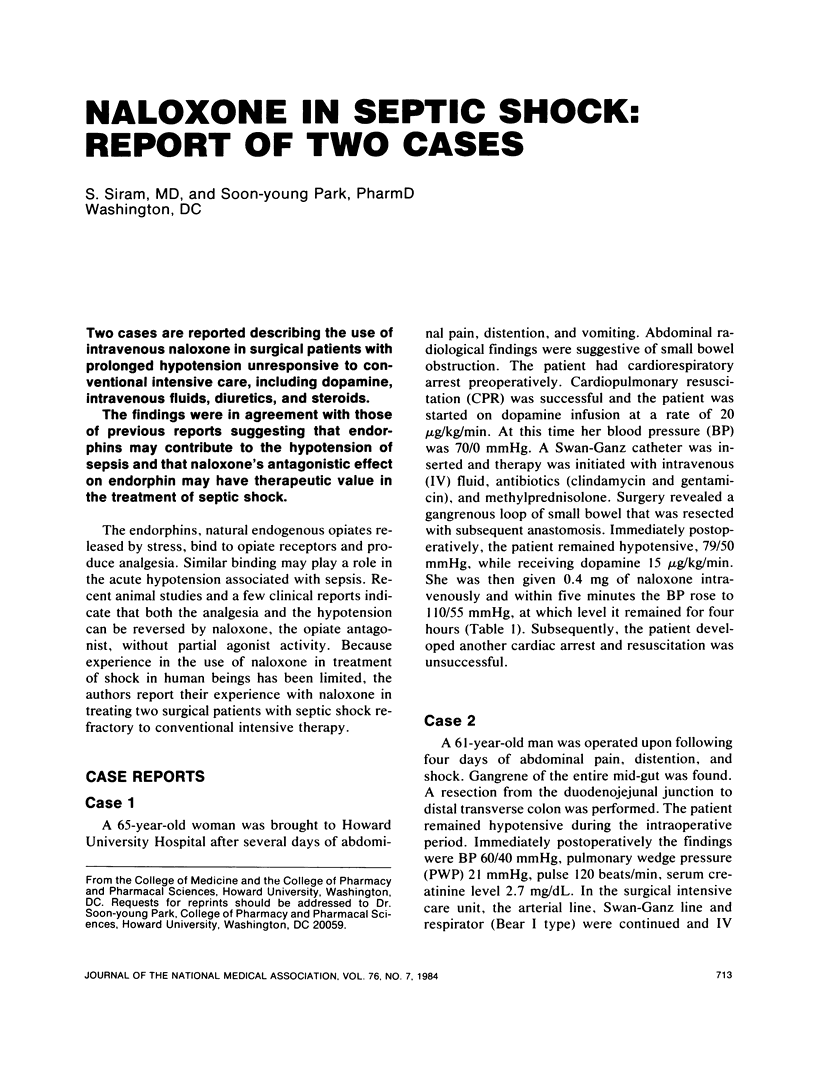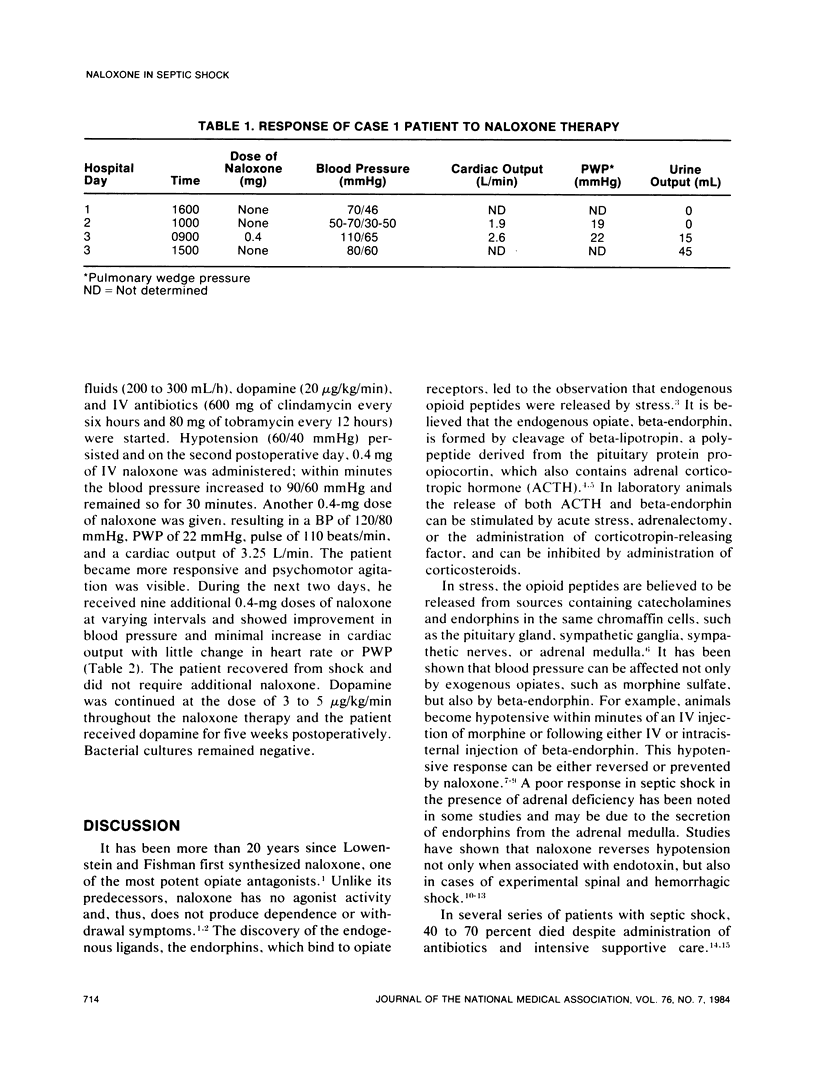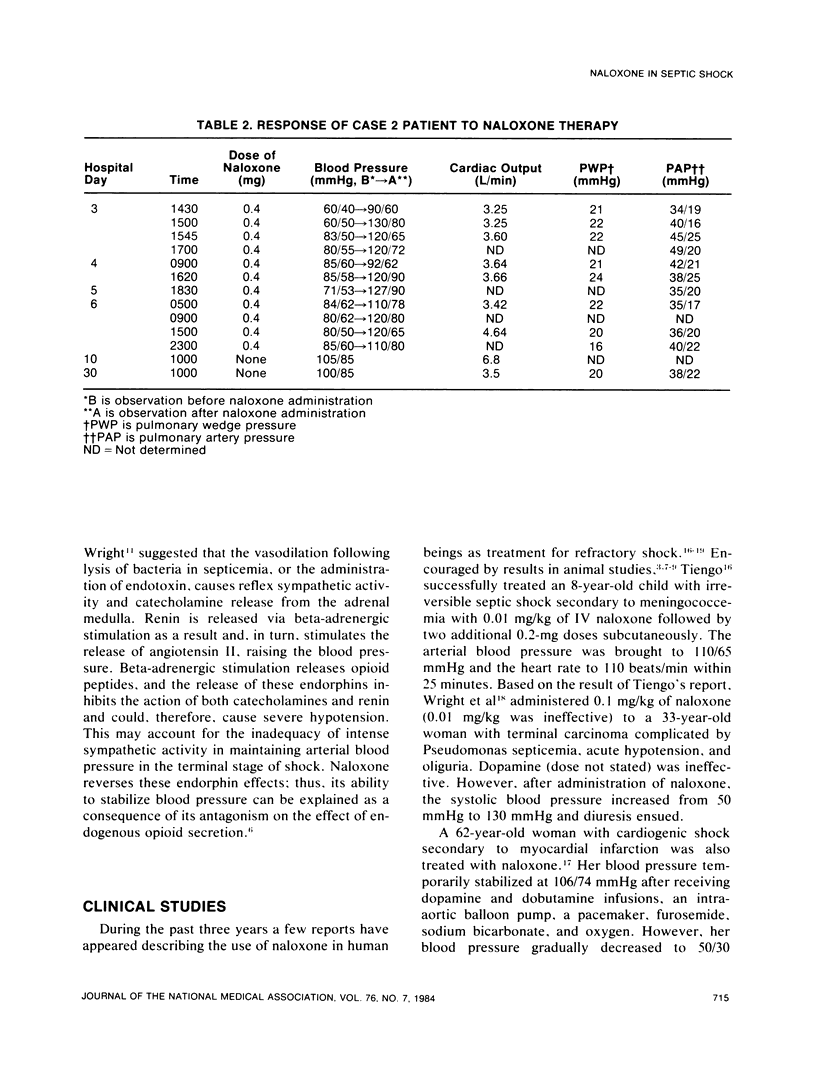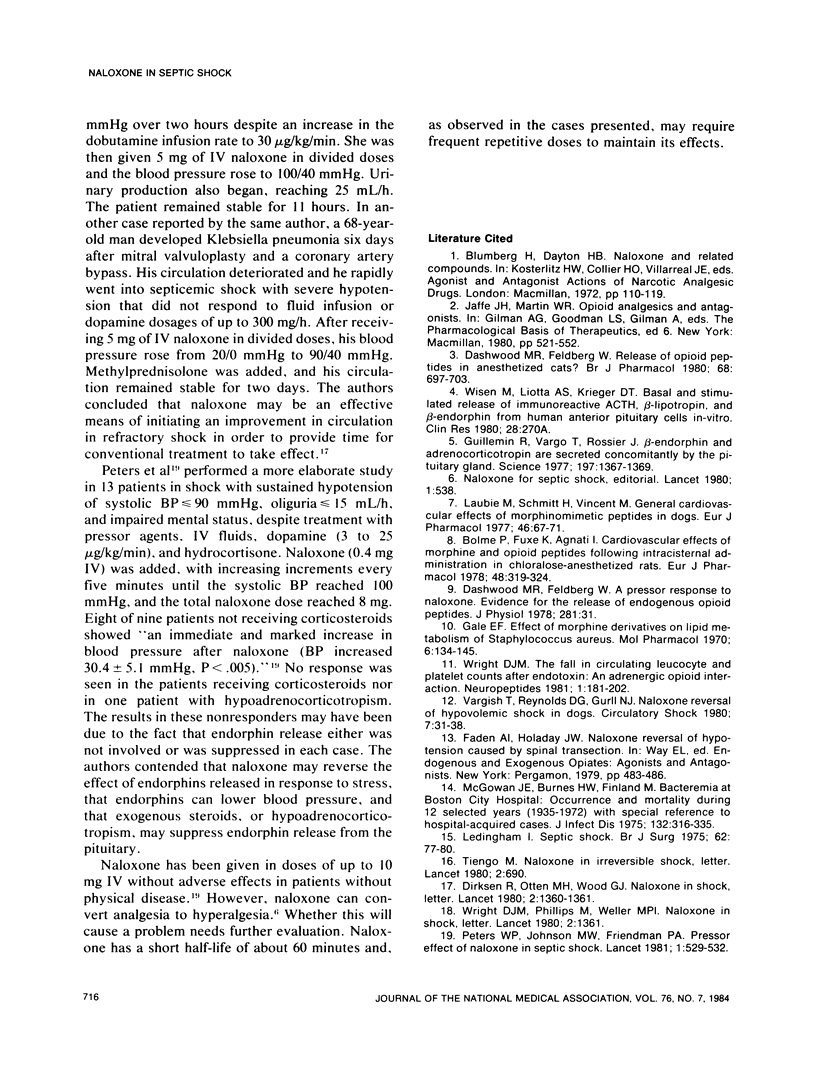Abstract
Two cases are reported describing the use of intravenous naloxone in surgical patients with prolonged hypotension unresponsive to conventional intensive care, including dopamine, intravenous fluids, diuretics, and steroids.
The findings were in agreement with those of previous reports suggesting that endorphins may contribute to the hypotension of sepsis and that naloxone's antagonistic effect on endorphin may have therapeutic value in the treatment of septic shock.
Full text
PDF



Selected References
These references are in PubMed. This may not be the complete list of references from this article.
- Almeida J. D., Griffith A. H. Viral infections and rheumatic factor. Lancet. 1980 Dec 20;2(8208-8209):1361–1362. doi: 10.1016/s0140-6736(80)92419-8. [DOI] [PubMed] [Google Scholar]
- Bolme P., Fuxe K., Agnati L. F., Bradley R., Smythies J. Cardiovascular effects of morphine and opioid peptides following intracisternal administration in chloralose-anesthetized rats. Eur J Pharmacol. 1978 Apr 1;48(3):319–324. doi: 10.1016/0014-2999(78)90090-0. [DOI] [PubMed] [Google Scholar]
- Dashwood M. R., Feldberg W. Release of opioid peptides in anaesthetized cats? Br J Pharmacol. 1980 Apr;68(4):697–703. doi: 10.1111/j.1476-5381.1980.tb10862.x. [DOI] [PMC free article] [PubMed] [Google Scholar]
- Gale E. F. Effect of morphine derivatives on lipid metabolism in Staphylococcus aureus. Mol Pharmacol. 1970 Mar;6(2):134–145. [PubMed] [Google Scholar]
- Guillemin R., Vargo T., Rossier J., Minick S., Ling N., Rivier C., Vale W., Bloom F. beta-Endorphin and adrenocorticotropin are selected concomitantly by the pituitary gland. Science. 1977 Sep 30;197(4311):1367–1369. doi: 10.1126/science.197601. [DOI] [PubMed] [Google Scholar]
- Laubie M., Schmitt H., Vincent M., Remond G. Central cardiovascular effects of morphinomimetic peptides in dogs. Eur J Pharmacol. 1977 Nov 1;46(1):67–71. doi: 10.1016/0014-2999(77)90146-7. [DOI] [PubMed] [Google Scholar]
- McGowan J. E., Jr, Barnes M. W., Finland M. Bacteremia at Boston City Hospital: Occurrence and mortality during 12 selected years (1935-1972), with special reference to hospital-acquired cases. J Infect Dis. 1975 Sep;132(3):316–335. doi: 10.1093/infdis/132.3.316. [DOI] [PubMed] [Google Scholar]
- Naloxone in shock. Lancet. 1980 Dec 20;2(8208-8209):1360–1360. [PubMed] [Google Scholar]
- Peters W. P., Johnson M. W., Friedman P. A., Mitch W. E. Pressor effect of naloxone in septic shock. Lancet. 1981 Mar 7;1(8219):529–532. doi: 10.1016/s0140-6736(81)92865-8. [DOI] [PubMed] [Google Scholar]
- Rees B. I. Secondary involvement of the penis by rectal cancer. Br J Surg. 1975 Jan;62(1):77–79. doi: 10.1002/bjs.1800620118. [DOI] [PubMed] [Google Scholar]
- Tiengo M. Naloxone in irreversible shock. Lancet. 1980 Sep 27;2(8196):690–690. doi: 10.1016/s0140-6736(80)92723-3. [DOI] [PubMed] [Google Scholar]
- Vargish T., Reynolds D. G., Gurll N. J., Lechner R. B., Holaday J. W., Faden A. I. Naloxone reversal of hypovolemic shock in dogs. Circ Shock. 1980;7(1):31–38. [PubMed] [Google Scholar]


